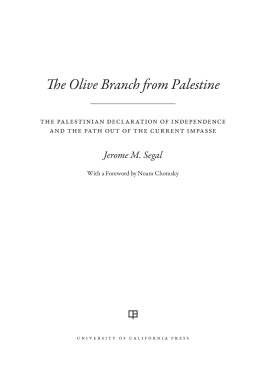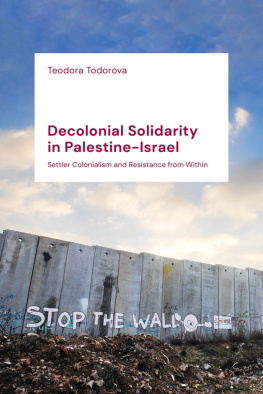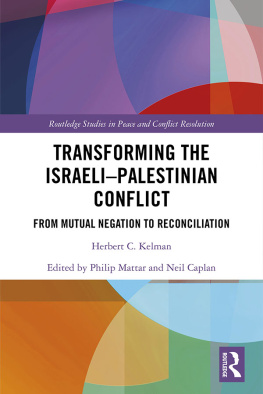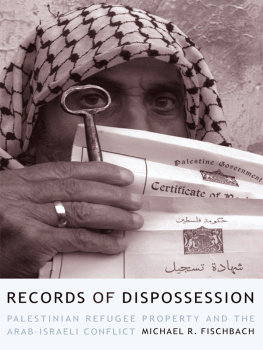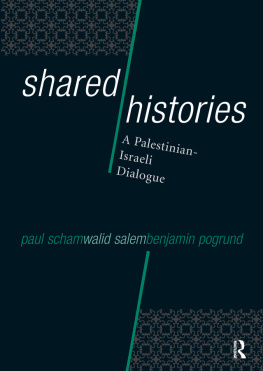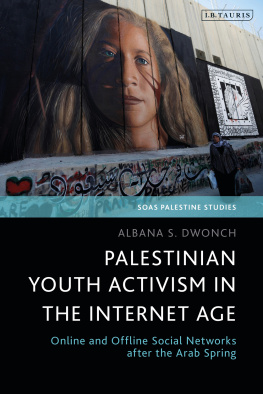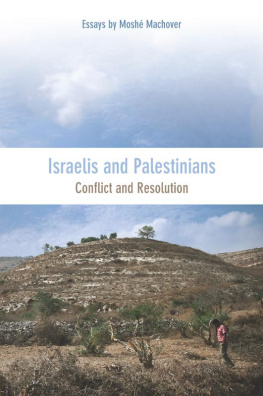2017 by Vanderbilt University Press
Nashville, Tennessee 37235
All rights reserved
First printing 2017
This book is printed on acid-free paper.
Manufactured in the United States of America
Library of Congress Cataloging-in-Publication Data on file
LC control number 2016030967
LC classification number DS119.76 .G889 2016
Dewey classification number 956.9405/4dc23
LC record available at lccn.loc.gov/2016030967
ISBN 978-0-8265-2133-0 (hardcover)
ISBN 978-0-8265-2134-7 (paperback)
ISBN 978-0-8265-2135-4 (ebook)
Parts of have appeared in the article Transcultural Memory in Conflict (Parallax 17 [4]: 6174, 2011); which was reprinted in Rick Crownshaw (ed.) Transcultural Memory (New York: Routledge, 2014).
Acknowledgments
My interest in memory and political activism was cultivated in ten years of learning, teaching, conducting fieldwork, and conceptualization. The empirical analysis of memory activism and the theoretical arguments that I present in this book have developed over these years through the exchange of ideas with many colleagues, advisors, and friends I have been blessed to have. I am deeply grateful to Jeffrey Goldfarb, my advisor, mentor, and friend, not only for guiding me through the long process that culminated in this book, but also for the intellectual dialogue on political culture and publics in the contemporary world that we developed via long and short conversations, seminars, research projects, and collaborative publications. Vera Zolberg has been an inspiration during my years at the New School for Social Research and after I graduated. Her scholarly work and teaching on memory politics and museums shaped my understanding of culture and memory. Elzbieta Matynia opened a window to the drama of political life, and Oz Frankel turned my attention to the subtle or explicit ironies and contradictions of memory and history in Israel-Palestine.
The intellectual community that surrounded me during my studies at the New School supplied academic freedom and encouraged me to take risks and be interdisciplinary in my inquiry. I am grateful to Monica Brannon, Marisol Lopez Menendez, Iysel Madra, Richie Savage, Dan Sherwood, Sam Tobin, Hector Vera, and Jeff Zimmerman, as well as to Roy Ben-Shai, Yoav Mehozay, Lorena Rivera-Orraca, Rafael Narvaez, Maija Andersone, and Karen Coleman for their intellectual and mental support.
Within the intellectual community, the New School Memory Studies Group, formed with fellow students and faculty in 2007, was a fruitful arena for my exploration of the relationships between collective memory and political change. I thank my fellow organizers, especially Lindsey Freeman, Amy Sodaro, Adam Brown, Alin Colman, Kimberly Spring, Rachel Daniell, Ben Nienass, Naomi Angel (who will always be remembered), Daniel Kressel, and Laliv Melamed. Special thanks go to Irit Dekel and Nahed Habiballah, with whom I have had meaningful dialogues, both on collective memory and on the Israeli-Palestinian conflict. The group became much more than we could have imagined it would when we first started. This interdisciplinary forum was established at a pivotal moment: when memory studies were gradually becoming institutionalized as a field yet were still flexible and open to questions. As junior scholars we had the nerve to direct these questions to senior scholars of memory from various disciplines, whom we invited to participate in conferences and publications. We also had revisions and answers: we argued, for example, that the future has been neglected in memory studies despite its influence on shaping our view of the past, and vice versa. Through these debates I came to know and converse with many of the leading memory scholars of our time; in addition to Zolberg, they are Jeffrey Olick, Marianne Hirsch, Andreas Huyssen, Daniel Levy, William Hirst, Robin Wagner-Pacifici, Eviatar Zerubavel, Yael Zerubavel, Barbie Zelizer, Selma Leydesdorff, Dori Laub, Leo Spitser, John Torpey, Elazar Barkan, Jonathan Bach, Ross Poole, and Vered Vinitzky-Seroussi, among others. I was also inspired by Ann Laura Stoler, James Jasper, and Gregory Maney. With many of these intellectuals I have crossed paths and collaborated in the following years.
Among scholars of Israel-Palestine, my analysis was inspired and enriched by conversations with scholars who see the complexities, ironies, contradictions, and constraints that the conflict situation reproduces every day, as well as the possibilities for change that emerge through the cracks. Among them are Tamar Katriel, Hanna Herzog, Uri Ram, Orly Lubin, Salim Tamari, Nadia Abu el-Haj, Rhoda Kanaaneh, Thomas Hill, Benoit Challand, Yehouda Shenhav, Nissim Mizrachi, Nachman Ben-Yehuda, Yfaat Weiss, Eitan Alimi, Louise Bethlehem, Edna Lomsky-Feder, and Yoav Peled. I also thank Merav Amir, Sagi Schaefer, Regev Nathansohn, Anat Rozenthal, Inna Lykin, Tom Pessah, Erica Weiss, Orli Fridman, Sigall Horovitz, Michael Shapira, Tamar Novik, Tamar Hostovsky Brandes, Dan Tzahor, and Uri Shwed for meaningful dialogues and feedback during my postdoctoral stage.
I have presented parts of the study in workshops and conferences over the years and was generously supported by many institutions and foundations: a New School for Social Research travel grant and fellowships; a Lady Davis Postdoctoral Fellowship; a research fellowship as part of a German-Israeli Foundation grant at the Minerva-Rozensveig Center of Hebrew University; a Rabin Fellowship at the Truman Institute for the Advancement of Peace of Hebrew University; a joint postdoctoral fellowship at the Truman Institute and the Davis Institute for International Relations; and a Shapira Postdoctoral Fellowship at the Department of Sociology and Anthropology at Tel Aviv University.
I am very thankful to Michael Ames at Vanderbilt University Press, with whom I found a common ground and mutual understanding from the start. He saw the potential of this book and of what it proposes for the future of Israel and Palestine, and I enjoyed my conversations with him not only about the book but also about current events in the Middle East. I am also grateful to my editors who have read versions of the book chapters over the years and especially to Sin Gibby, whose comments and suggestions have helped improve this final text significantly. Additionally, Galia Fischer, Rotem Ruff, Itay Katz, and Roy Eventov have greatly contributed both to the content and the appearance and form of this book.
Most important, this book is based on long-term fieldwork and owes a great deal to the Jewish Israeli and Arab Palestinian activists who let me enter their organizations and activities and shared their thoughts, goals, and hopes for the future with me through some of the most interesting conversations on memory I have ever had. While most of them are not listed by their real names because their work is still contested in their state and society, this book is one of the ways in which I would like to give back to these memory activists by sharing with them some of what I have learned.
Memory Activism


